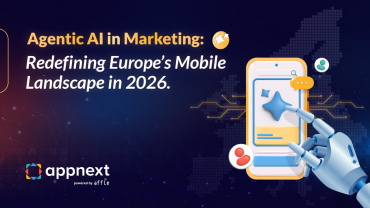Imagine trying to sell media to a Starbucks marketing manager. You’ve finally landed a meeting and you’re sitting in the over-sized chair with your sweaty hands holding your 3.59$ sugary ice caramel latte when he looks up at you and says those three magical words (in what feels like slow motion)“Sure I’ll buy”. And then comes the but “but, I only need to target new users who have never been to the store before”.
You will probably think he/she is crazy. I mean, what are the chances that a US citizen has never laid foot in a Starbucks? And even if such citizens exist – who guarantees that they will be loyal Starbucks customers for life?
Well, mobile markets do this. Even the attribution companies (as far as I know besides Appsflyer which allows a configurable lifetime window) will only credit an install to a source once in a lifetime. So, a user can install an app, never use it, uninstall it. Install 3 years later – and the media channel will not get the attribution for the install.
The retailers (in our example) might say “well – once they are in our store we can communicate with them, get them to sign up to our Starbucks reward membership card”.
Sure that seems crazy. But so are most mobile marketers today. Of course, you can claim that marketing to an existing mobile user is much easier via effective methods like push-notifications. (even though in certain categories over 60% of users turn them off) But that’s not far from the retail marketing manager saying they can retain and market products via their mail program.They can, but just as consumers get so many snail mails – they get many pushes a day from dozens of apps assuming they are not part of the 60% who turned them off.

The battle for the next big app
Mobile habits are not far from our regular commerce and entertainment ones. We purchase goods at many different retailers simultaneously, watch different TV series in parallel, and use different similar apps at the same time.
Users are installing fewer apps. According to a survey done by Tune, Most Americans install approximately 1.5 apps per month. Not zero, but nothing to write home about either. It’s a difficult time to be an app when users are always looking for the next big thing.

A mobile app is not a captivating audience machine. Mobile marketers know this, they know that most users will not use the app the day after they install it. But the thinking is too binary. Most marketers treat these users as churned users. Not as an opportunity to reach a customer who is unaware of the product and needs to be motivated to engage with it.
Stop users from “playing the field”
Some mobile marketers do use re-engagement ads to push users down the funnel from install to purchase. But this is mainly done in the sidelines of e-commerce apps and doesn’t go deeper than the first purchase. Sure, your whale strategy game player has already spent $100K on your game and is rather active. But ( and I hate to break your heart here) he is probably doing the same in a few games in parallel. Basically, he is “playing the app field.” The same goes for a taxi app user – he is active but uses more than one taxi app. Why not get your consumer to order the next ride, play the next game, purchase the next item with you? Play only on your app field?
Some of the reluctance of mobile marketers to spend more on re-engagement ads stems from the fact that they calculate the costs and revenues from the install to know how much they can pay per install. They need to differentiate the extra revenue from the regular LTV and make sure not to credit to the install source. Technically, it’s easy – all attribution companies allow you to associate events in a defined window to a re-engagement ad event. But maybe marketers find it to be too messy and complex.
Because the app market is bursting with the “next big thing” or app on a daily basis, and users spend more time in fewer apps, app marketers should take a second look at re-engagement ads. As a whole, we should break the mold and stop thinking in terms of CPI vs LTV. All marketing should be transactional. Measure the ROAS on a single transaction. Sure, when entering a market the main transaction is an install, but then spend like crazy as long as you have ROAS per transaction and be willing to allocate funds to re-engagement ads to bring back those users later. Getting new customers to visit Starbucks is important, but it won’t necessarily matter in the long run if they don’t end up coming back. After all, a Starbucks rewards card by itself can only take you so far.




Comments are closed.